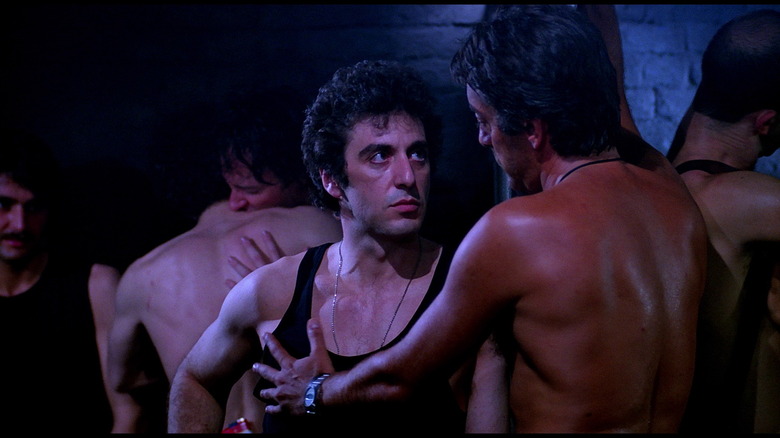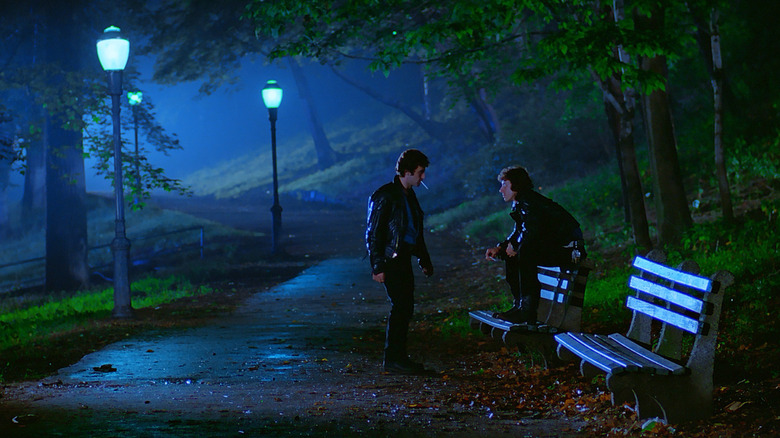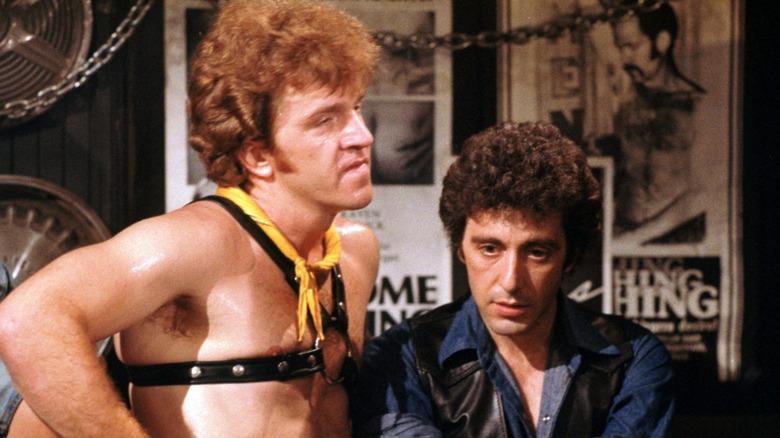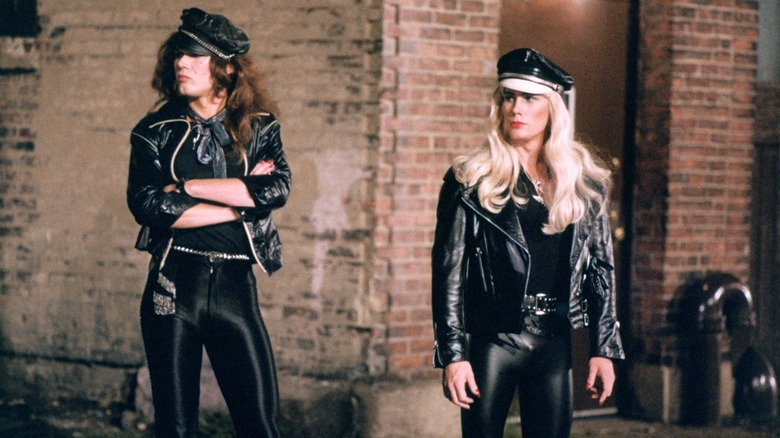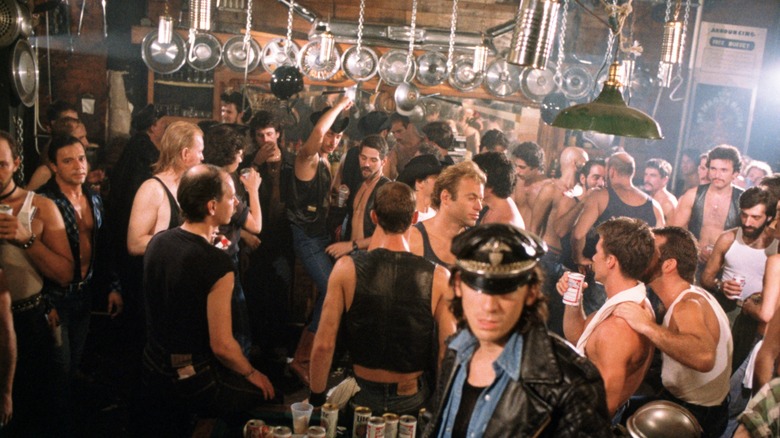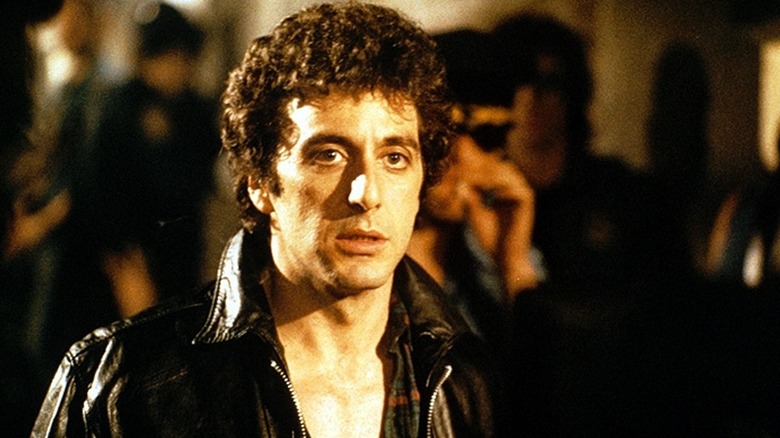The Cruising Controversy Explained
In autumn 1977, Village Voice columnist Arthur Bell sat down in Riker's Island Detention Center to interview the man who murdered his friend. As an LGBTQ activist, he had covered many gay issues, starting with the Stonewall riots back in '69. More recently, he had written about a series of unsolved killings in New York's gay community, and his work had inadvertently ended up catching the murderer of Addison Verrill, a reporter for Variety.
The man Bell was visiting in Riker's, Paul Bateson, had read Bell's article and called him up to confess to the murder. A second caller helped the police identify him. Bell concludes his article, "A Talk on the Wild Side," about his face-to-face conversation with Bateson on a chilling note:
"As I prepare to leave, he says he wishes he could go with me. Strange. Eerie feelings. This is the man who has admitted to killing someone I knew. Yet, if we had met six weeks ago, if the proposition had been made in a bar instead of a prison, I'd have said, 'You're on.'"
Bateson was convicted for killing Verrill and implicated in six other murders, although there wasn't enough evidence to prosecute him for those crimes.
Filmmaker William Friedkin wasn't interested in directing a film based on Gerald Walker's 1970 novel about a serial killer preying on New York's gay community until after he'd read Bell's articles. By a strange coincidence, Friedkin had a connection with Bateson, who had played a small part in the infamous hospital scene in "The Exorcist.
Friedkin was also friends with former NYPD detective Randy Jurgensen, who acted as a consultant on "The French Connection" and had a bit part in "Sorcerer." In the '60s, Jurgensen had gone undercover and successfully busted two shakedown artists, posing as cops, who were targeting the gay community.
All these lines converged and provided background for Friedkin's most notorious film, "Cruising." To say it was controversial is an understatement; the s*** hit the fan as soon as Friedkin and his team showed up to shoot the thing.
So what happens in Cruising again?
Body parts are washing up in the Hudson River and, after a young man is found brutally stabbed to death, the NYPD fears that a serial killer is on the loose. The victims all appear to be members of the heavy leather scene within the city's gay community, and all fit a certain profile. In an attempt to lure out the murderer, tired police Captain Edelson (Paul Sorvino) summons rookie cop Steve Burns (Al Pacino) with a new job offer. Since Burns is of a similar height, build, and look to the victims, Edelson wants him to go undercover in the nocturnal world of S&M and leather bars to draw out the killer. Burns isn't too keen at first, but he's ambitious and sees the assignment as a way to fast track his career.
Burns takes a small apartment in the Village, makes friends with Ted (Don Scardino), the friendly gay playwright next door, and starts feeling his way into the leather scene at night. The secret assignment soon puts a strain on his relationship with his girlfriend, Nancy (Karen Allen), and Burns is nervous and ill-equipped to successfully infiltrate this world and weed out the murderer. Meanwhile, more men die by the killer's knife.
As a murder mystery or serial killer thriller, "Cruising" is just a bad film. I'm a big fan of Friedkin's stunning '70s hat trick of "The French Connection," "The Exorcist," and "Sorcerer," but the director shows none of that flair or complete assurance over his material here. While Friedkin conducted months of research in Mob-owned hardcore venues like Mineshaft and Anvil (via Factsverse) and shot much footage with real members of the leather community as extras, he has little idea what to do with the material. Writing his own screenplay, he boils the plot down to that offensive old "conflicted gay guy as the killer" trope.
I've also never seen Pacino look so timid or unhappy in the role. Like Burns, he looks like a man in over his head and desperately wants to get out.
The backlash begins ... before filming starts
Having played an unwitting part in inspiring Friedkin to actually make "Cruising," Arthur Bell was also instrumental in leading a fiery pre-emptive backlash against it. Having acquired a copy of the script, he rallied his readers against it (via Washington Post):
"I feel like the Godfather of the gay movement. I put out a contract on Friedkin's movie, and I feel confident that it can be stopped. If it gets released, we'll hit the distributors... The script has no social value; everyone comes out looking bad — cops, gays, even the city."
It's hard to disagree with that; one of the grubbiest aspects of "Cruising" is that almost everyone in it looks irredeemably awful. There are only two sympathetic characters, and they're barely in it. Karen Allen is a soothing presence as Nancy, and Ted is instantly loveable ... but he disappears for half the movie before winding up as a corpse.
As Friedkin and his crew rolled into the Village to shoot the film, the gay community heeded Bell's call. As Jason Bailey of The Village Voice wrote:
"Pamphlets were distributed, rallies were held, streets were blocked, bottles and bricks were thrown, demonstrators were roughed up, and arrests were made. Friedkin, who didn't like working in the studio, shot the film's many apartment scenes in real buildings; residents in adjoining units played music so loud it drowned out the dialogue. (Most of it had to be re-recorded after the fact.) People on the streets did their part by blasting air horns and whistles."
These conditions weren't exactly good for a harmonious location shoot. To make matters worse, Friedkin excised 40 minutes of footage to get the MPAA to downgrade their original X rating to an R. Friedkin has since been evasive about what that missing footage actually contained, variously claiming it was nothing but hardcore sex or scenes that added mysterious twists and turns and more motivation for Burns. "Cruising" certainly feels like a film that is missing vital plot and character points, which might have made some sense of that well-telegraphed "twist" ending.
What exactly sparked the Cruising controversy?
The biggest problem is how "Cruising" represents the scene that provides the backdrop to the garbled murder mystery. The bar and club footage seems authentic enough to my untrained eye, and the extras all look like they're having fun. Speaking as a straight guy who is interested in subcultures, I was totally fascinated by the etiquette and little details, like the different colored hankies representing sexual preferences. I could have done with a lot more of that stuff.
Here's the thing that pissed me off, though. Leather and S&M isn't really my cup of tea, but I wasn't scandalized by the film's copious footage of hairy, sweaty guys getting it on in public. I was more shocked by Pacino's dance moves. What disturbed me was the uneasy feeling that the film was inviting me to be scandalized by those images, nudging me towards rejecting it as all so dark and sleazy. It's not my thing, but then leather, bondage gear, gimp masks, and fisting aren't my thing in a straight context either. I didn't feel the urge to reject it, I just felt like Friedkin was pushing a very square view of the scene onto me.
Friedkin seems to be attempting an objective insight into that world, or at least imagines he is. But then what are we supposed to make of a few Tyler Durden-esque frames of anal sex spliced into the first murder scene? Maybe he is trying to give a glimpse of the killer's psyche, but my feeling was that it just equates gay sex with violence.
As Richard Goldstein of The Village Voice explained about the city's bars shown in the film, which were:
"Designed to resemble a filmmaker's fantasy of dangerous sex. Illusion — not danger — is the point. The people who go to those bars know they are visiting a Luna Park of the libido; most of the people who patronize 'Cruising' will think they are seeing ordinary life. Billy Friedkin wouldn't know ordinary gay life if it hit him in the face — which, apparently, it has."
Backlash to the backlash and a critical battering...
The gay community were not completely united in their war on "Cruising," and there were protests against the protests. John Devere, editor-in-chief of the gay magazine Mandate, wrote (via The Village Voice):
"One recurrent observation was that the men who frequent the world being depicted — the Eagle, the Spike, the Mineshaft, the Anvil — were in the movie, and did not object to their world being depicted. Middle-of-the-road gays, they thought, were the ones who didn't want the leather fringe seen by Middle America, even though the world certainly exists. Many felt that the protests were as much a protest against the leather world itself as they are a protest against Friedkin's film."
Mainstream contemporary critics were almost completely united in vilifying the way "Cruising" represented the scene that Friedkin appears unable to get to grips with. David Denby of New York (via The Village Voice) felt that:
"The movie is sordid and depressing because it's been made without insight or love and from the depths of a soul about the size of a thumbtack."
While Vincent Canby of the New York Times observed:
"['Cruising' is] exceptionally unpleasant, not necessarily because of the subject matter, but because it makes no attempt to comprehend it. It just stares."
The hits just kept coming for Friedkin's much-maligned film. It picked up three Razzie nominations (Worst Picture, Director, and Screenplay) for the first ever Golden Raspberry awards, and lost out on Picture and Screenplay to "Can't Stop the Music" starring the Village People.
The year after "Cruising" was released, young gay men started dying from a new virus (via HIV.gov). Although the film was made well before the AIDS epidemic that would ravage the city's gay community just a few years later, it is eerie watching it now with full knowledge of the coming storm.
A modern reappraisal of Cruising
Time has been surprisingly kind to "Cruising." The movie still stinks, but some modern critics, including gay ones, have begun warming to its portrayal of a specific time and place and arguing against its perceived homophobia. Peyton Brock wrote in Collider:
"This was not a film that demonized the gay community, nor tied murder or psychopathy to it, but a film about a marginalized, stigmatized community at the mercy of bigoted law enforcement and dangerous homophobia, both internal and external. I certainly do not blame Arthur Bell or the New York gay community of 1979 for their harsh and presumptive attacks on Cruising, for they were a community only ten years removed from the Stonewall riots, and still facing heavy prejudice and a lack of rights, which would only increase with the coming AIDS epidemic. For a group so widely hated, it seems understandable that a film, which on the surface seems to connect being gay with being an evil killer, would rouse their temper and prompt retaliation.
Some have even waxed nostalgic for Friedkin's balls-out snapshot of those pre-AIDS halcyon days. As Nathan Lee of the Voice wrote:
"Cruising is a lurid fever dream of popper fumes, color-coded pocket hankies, hardcore disco frottage, and Crisco-coated forearms. Nowadays, when the naughtiest thing you can do in a New York gay club is light a cigarette, it's bracing—and, let's admit, pretty f***ing hot— to travel back to a moment when getting your a** plowed in public was as blasé as ordering a Red Bull."
Perhaps the most moving and bittersweet note that I could find on the subject came from Grady Hendrix of the New York Sun:
"With over 72,000 AIDS deaths in New York to date, it stands to reason that a large slice of the men you see in the club scenes are no longer with us. But here in their disco grottoes, behind their mustaches and muttonchops and leather, behind their tough-guy masks, they're smiling. They've found a place in the world where everything finally makes sense."
